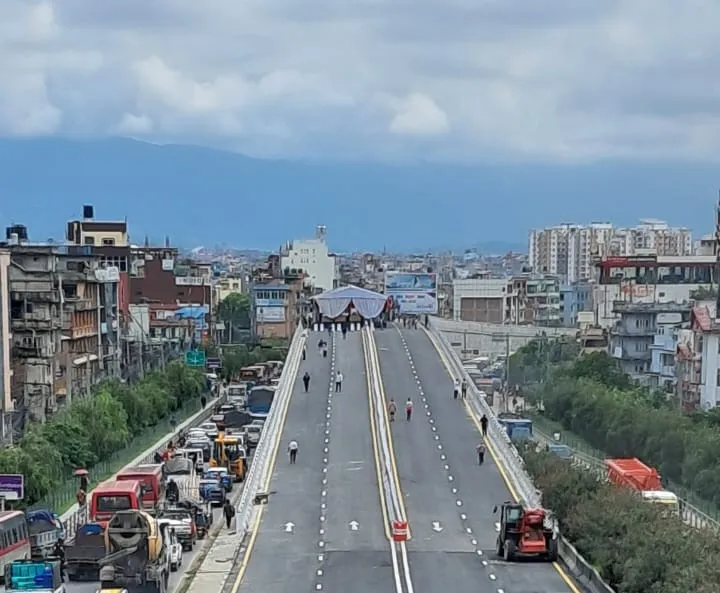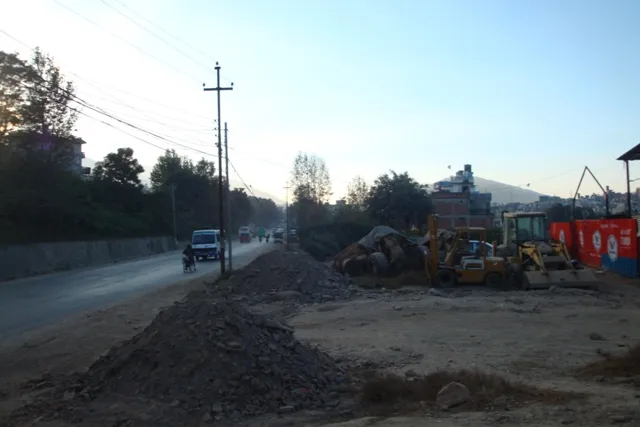A new road-widening strategy is being put into effect in Nepal’s Kathmandu Valley. The aim of this programme is to reduce traffic jams on busy roads, especially during peak hours. A major problem for Kathmandu is that the current road the infrastructure in the city is not sufficient for the increasing numbers of vehicles. In a bid to tackle the problem, the authorities have initiated a programme of road widening in various areas of Kathmandu Valley. However, obstructions have been encountered due to residen
May 16, 2012
Read time: 2 mins
A new road-widening strategy is being put into effect in Nepal’s Kathmandu Valley. The aim of this programme is to reduce traffic jams on busy roads, especially during peak hours. A major problem for Kathmandu is that the current road the infrastructure in the city is not sufficient for the increasing numbers of vehicles. In a bid to tackle the problem, the authorities have initiated a programme of road widening in various areas of Kathmandu Valley. However, obstructions have been encountered due to residences that have hampered the road expansion process. The widening work includes a 300m section of the Nanigunj Gairidhar road, a 280m section of the Gairidhara Chhata Ganesh road, a 1000m stretch of the Gairidhara-Baluwatar road, a 150m section of the Gairidhara-Police Headquarters link, a 240m stretch of the Chabhil service track, 400m of the Balaju Bypass, 320m of the Maitedevi Setopul road and an 875m section of the Hanumanthan New Baneshwor road. Some 3565m in all is being widened by the Department of Roads. The new roads will have asphalt concrete surfaces as well as 1.5m wide pedestrian pavements on either side.
The road widening action is being carried out in keeping with a supreme court directive along with the Kathmandu Valley Development Authority Act, which took effect on April 13,2012. The Nepalese Government has deputed 200 civil servants at the Kathmandu Valley Town Development Committee. The authorities say that bulldozing of structures built on encroached land will continue. However, Nepal’s prime minister Dr Baburam Bhattari has criticised the official at the Ministry for physical planning and works over delays in road-widening imitative. In addition, the former mayor of Kathmandu Metropolitian city Keshab Sthapit has been appointed as a commissioner of the newly formed Kathmandu Valley Development Authority (KVDA). Sthapit was the mayor of Kathmandu for five years and now has the remit of ensuring that the road widening work is carried out more effectively.
The road widening action is being carried out in keeping with a supreme court directive along with the Kathmandu Valley Development Authority Act, which took effect on April 13,2012. The Nepalese Government has deputed 200 civil servants at the Kathmandu Valley Town Development Committee. The authorities say that bulldozing of structures built on encroached land will continue. However, Nepal’s prime minister Dr Baburam Bhattari has criticised the official at the Ministry for physical planning and works over delays in road-widening imitative. In addition, the former mayor of Kathmandu Metropolitian city Keshab Sthapit has been appointed as a commissioner of the newly formed Kathmandu Valley Development Authority (KVDA). Sthapit was the mayor of Kathmandu for five years and now has the remit of ensuring that the road widening work is carried out more effectively.







